Oh the dark deep sea is frightful,
But the food not so delightful,
But since we’ve got no place to go,
Let It Marine Snow! Let It Marine Snow! Let It Marine Snow!
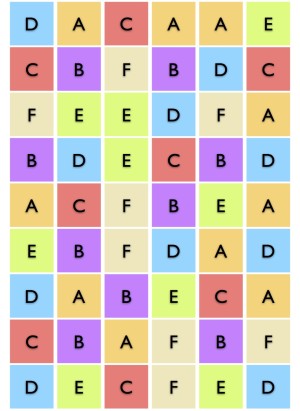
In the late 1960’s, two marine biologists, Howard Sanders and Robert Hessler, made a shocking find–the biodiversity of the deep-sea floor is astoundingly high. In an area the size of a coffee table over 300 species can coexist, a number that rivals tropical rainforests and coral reefs. Yet these findings also raised a paradox. High diversity is typically associated with physically complex habitats, like forests and reefs, plentiful with food that allow for a variety of niches. In the food poor, homogenous mud flats of the deep sea, how can so many species coexist? The answer is snow.
The lack of light in the deep oceans precludes photosynthesis. Thus, primary production of carbon, the base of a food web, is virtually absent. Deep-sea organisms are reliant upon a trickle of falling material from the productive shallow oceans overhead. This material is largely a low quality and low quantity mixture of decaying bodies and feces degraded further by bacteria on its decent into the deep. Roughly 2-5% of the total carbon on the ocean’s surface falls to the deep seafloor, the equivalent of roughly 2-3 tablespoons from a 5-pound bag of sugar. This sinking material, marine snow, falls as a dusting on the ocean bottom. But like a light snow in your yard does not form an even layer and Buffalo receives more snow than Miami, marine snow too is denser in some spots whether an area the size of coffee table or an entire ocean.
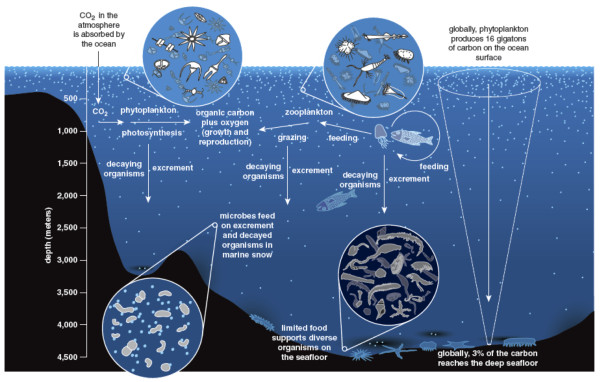
In this marine snow medley lays the answer for our deep-sea paradox.
In the 1970’s, Howard Sanders, Fred Grassle, and Paul Snelgrove proposed instead of the deep-sea floor being a homogenous wasteland, it was comprised of a variety of patches each with a unique set of organisms, i.e. the patch-mosaic hypothesis. The deep-sea floor is essentially a patchwork quilt of different small habitats. I began this year by publishing a study addressing how heterogeneity in marine snow of distances of just a few yards can lead to completely different communities of organisms. At the end of this year, just today in fact, I with coauthors show this same pattern over several thousands of kilometers.
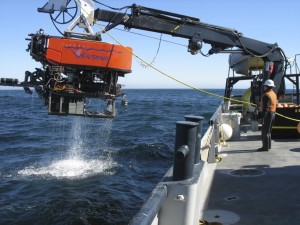
In 2006, Jim Barry and I during my tenure at the Monterey Bay Aquarium Research Institute sampled a 3203-meter deep site off the Monterey Bay. We collected with the robotic arm of a remotely operated vehicle 44 sediment cores over approximately 400 yards. Each core we sieved and removed the small invertebrates living in the sediment, from worms to crustaceans to molluscs plus much more. Equally important, we measured the carbon content, of the sediment as an indicator of marine snowfall. Largely, we found that invertebrate communities in cores taken adjacent to each other were just as likely to be similar as dissimilar to one another. Indeed, cores adjacent to one another were just 3% more likely to share common species than cores taken 350 meters apart! Why would communities right next to one another be so different? Differences in marine snow accumulation. Invertebrate communities receiving comparable marine snowfall were more similar.
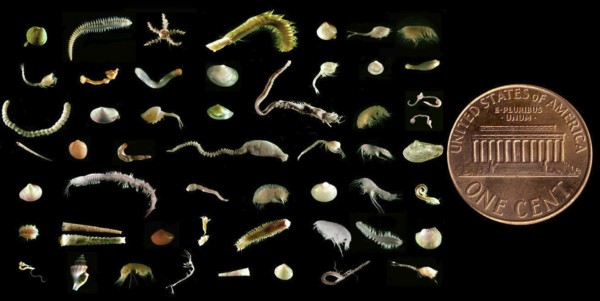
Today in the Proceedings of the Royal Society with collaborators Allen Hurlbert and James Stegen from the University of North Carolina, I unravel the paradox of the deep a little further. Given the difficulty of conducting deep-sea work, patterns of diversity of entire oceans are rare. In 2008, John Allen, working previously with Howard Sanders, published an amazing dataset of deep-sea bivalves taken form 270 sites across the Atlantic Ocean. We combined this dataset with data on bivalve sizes and genetic relatedness with multiple datasets on the environment, including annual marine snow accumulation. We found that the availability of both chemical, i.e. marine snow, and thermal, i.e. temperature, energy explained differences in compositions of bivalves communities across the Atlantic Ocean. Interestingly, and in contrast to current thinking (including my own!) that invertebrates with planktotrophic larvae should be able to disperse everywhere, we also detected the importance of dispersal ability in explaining community differences. In other words, some of what determines where a bivalve is located in the Atlantic is determined by its dispersal ability and the amount of energy it requires.
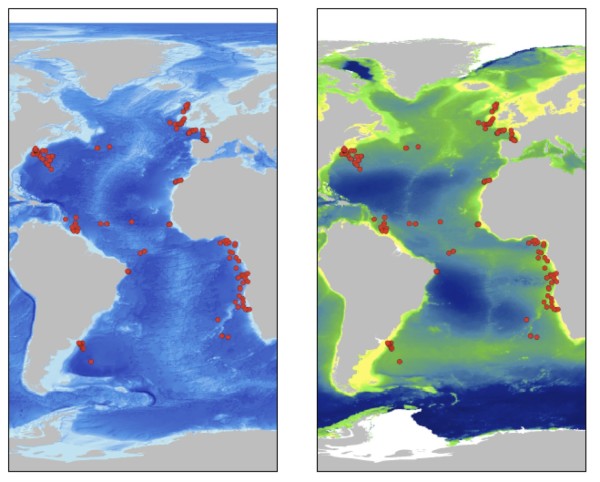
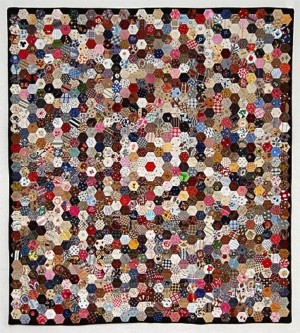 But we went one step further and developed a simulation. We constructed virtual bivalves allowing them to evolve traits, fill environmental niches, and disperse across a virtual Atlantic Ocean. This is a computationally complex and demanding operation and required a cluster of computers at UNC to run. In each simulation, we could control the dispersal ability and food requirements for the bivalves. For each simulation, we would then compare the patterns that emerged with those in our real Atlantic bivalves communities. This would allow us to determine the exact level of dispersal ability and food requirements of bivalves to produce changes in community compositions across the Atlantic. From our simulations, we found that 95% of bivalves could disperse 749 km from their natal site. We also found that 5% of bivalve juveniles would not be able to persist in habitats that deviated from their optimum habitat more than 2.1 grams of carbon per meter squared per year. That translates to about 1 teaspoon over a dining room table over the course of an entire year! Bivalves are extremely sensitive to the amount food available.
But we went one step further and developed a simulation. We constructed virtual bivalves allowing them to evolve traits, fill environmental niches, and disperse across a virtual Atlantic Ocean. This is a computationally complex and demanding operation and required a cluster of computers at UNC to run. In each simulation, we could control the dispersal ability and food requirements for the bivalves. For each simulation, we would then compare the patterns that emerged with those in our real Atlantic bivalves communities. This would allow us to determine the exact level of dispersal ability and food requirements of bivalves to produce changes in community compositions across the Atlantic. From our simulations, we found that 95% of bivalves could disperse 749 km from their natal site. We also found that 5% of bivalve juveniles would not be able to persist in habitats that deviated from their optimum habitat more than 2.1 grams of carbon per meter squared per year. That translates to about 1 teaspoon over a dining room table over the course of an entire year! Bivalves are extremely sensitive to the amount food available.
Overall, these studies illustrate that the deep-sea floor is like your Grandma’s quilt presenting a variety of patches of material. These patches, driven by differences in marine snow, whether occurring over inches or miles, provide unique habitats that allow a variety of different animals to coexist. And much like humans prefer different amounts of snow (give me warm weather or give me death!), deep-sea species are uniquely adapted to differences in marine snow.
Craig R. McClain, James C. Stegen, and Allen H. Hurlbert Dispersal, environmental niches and oceanic-scale turnover in deep-sea bivalves Proceedings of the Royal Society B: Biological Sciences published online before print December 21, 2011, doi:10.1098/rspb.2011.2166
UPDATE 1:
Also take a look at the great write ups by Wired and IO9. Love the titles! The Bounty of Species in a Single Scoop of Seafloor Mud and The Ocean Floor is Like a Rainforest Where Feces and Dead Animals Rain From the Sky
UPDATE 2: I was asked for a legend to the animals above. Hopefully this helps. As for the species, I could give you the actual species names but perhaps that would not be helpful to readers. Instead I will give you the general groupings that may be more informative.
So in this orientation above from left to right
Row 1 bivalve, polychaete, ophiuroid, polychaete, bivalve, cumacean, amphipod
Row 2 cumacean, anemone, aplacophoran, bivalve, cumacean, bivalve, aplacophoran
Row 3 polychaete, bivalve, cumacean, bivalve, big polychaete, amphipod, 2 oligochaetes
Row 4 scaphopod, bivalve, aplacophoran, long polychaete, cumacean, amphipod, bivalve
Row 5 bivalve, polychaete, aplacophoran, amphipod, bivalve, amphipod, polychaete
Row 6 ostracod, polychaete with tube, bivalve, anemone, polychaete, amphipod, polychaete, bivalve
Row 7 polychaete, gastropod, amphipod, caprellid shrimp, scaphopod, bivalve, polychaete, cumacean
Echinoderms
ophiuroid http://en.wikipedia.org/wiki/Brittle_star
Molluscs
bivalve http://en.wikipedia.org/wiki/Bivalve
aplacophora http://en.wikipedia.org/wiki/Aplacophora
scaphopod http://en.wikipedia.org/wiki/Scaphopod
gastropod http://en.wikipedia.org/wiki/Gastropod
Annelids
polychaete http://en.wikipedia.org/wiki/Polychaete
oligochaete http://en.wikipedia.org/wiki/Oligochaete
Crustaceans
cumacean http://en.wikipedia.org/wiki/Cumacean
amphipod http://en.wikipedia.org/wiki/Amphipod
ostracod http://en.wikipedia.org/wiki/Ostracod
caprellid http://en.wikipedia.org/wiki/Skeleton_shrimp
Cnidarian
anemone http://en.wikipedia.org/wiki/Sea_anemone

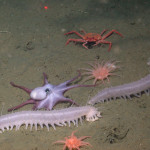



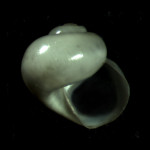
Cool stuff! Can you determine patch size using the sampling you did? Any evidence of fractal scaling in patch sizes?
This is so cool! (How quickly) Does the quilt “rearrange” over time? I’m assuming that the pattern of marine snow is not consistent over time? (vs. snow falling more heavily in high mountains than in lowlands, e.g.) Does this mean that some species die out in their “patch” as (or, if) the marine snow pattern changes?
Using a spatial analysis we found significant aggregation of species from adjacent cores ~7cm all the way to 350m. Not sure about fractal scaling and not sure at how to go about testing/analyzing for that.
Jen,
There is definitely a temporal component as each patch goes through a series of successional stages, causing a rearrangement and long term maintenance of individual species. Marine snow is not consistent over time being higher during spring bloom events and cycling with El Nino/La Nina patterns. Individuals could either migrate to a new patch or throughout juveniles ready to colonize a new patch so that species persist. If marine snow increases or decreases, the latter happening now because of climate change, then some species may not be able to persist or have to shift their geographic range.
Well that’s 4 orders of magnitude, so a pretty pervasive pattern!
So are some of these organisms capable of quick dispersal to new snow hot spots? Especially over those small spatial scales mentioned at the beginning of the article, I imagine that the rate of marine snow changes pretty frequently.
On an unrelated note, do you use stable isotopes to determine carbon source of your sediment organic matter? I wonder if at the densities of organisms you see in these patches, how long they can be sustained by just their normal processes – feeding, fecal production, reproduction, death and decay. Are these patches capable of sustaining themselves on a microbial loop of sorts?
“If marine snow increases or decreases, the latter happening now because of climate change, then some species may not be able to persist or have to shift their geographic range.”
Why does the snow decrease? Warmer water and increased CO2 should mean more life and more snow, or not?
Many of the deep-sea invertebrates have larvae that can be dispersed in bottom currents. The larvae are usually demersal and short-lived (nonfeedin, lecithotrophic). However, life histories are not known for most species. See Scheltema, AH. Reproduction and rapid growth in a deep-sea aplacophoran mollusc, Prochaetoderma yongei.- Mar. Ecol. Prog. Ser, 1987
Dr. M,
I am currently working on identifying benthic invertebrates from sediments samples off the coast of Florida. Many of the amphipod and polychaete specimens that I have encountered are extremely similar to the ones posted in your species picture. I was wondering if you had a list of the genus and species of those critters from the photograph.
Many thanks,
rad
Beautiful work! The picture is worth a thousand words too: all (most) of the animals in the photo look familiar from typical shallow water sites — but they are an order of magnitude smaller! A striking illustration of the dwarfism of deep-sea invertebrates in that food desert (though I suppose it’s occasionally Fat City, relatively speaking, when a little patch of phytodetritus wafts down onto the bottom.
We really don’t know too much about rates for dispersal. But patch persistance is likely to be lon lasting. The effects of food patch can still be seen years out from the original enrichment.
I did nto use stable isotopes but that is something on the list for follow up research. Your questions are exactly what I have on mind.
Amelie,
Thanks for the comment and the continued work on the aplacophorans. Definitely you and Rudy’s work on dispersal have set the stage. Knowing life histories for all these would definitely provide a more complete picture of this story.
I can provide a list but it is likely that there is much similarity between these deep Pacific Ocean species and your shallow Atlantic species.
Interesting this idea of deep-sea dwarfism is the primary reason I generated the photograph!
I would greatly appreciate it if you could pass that along. If nothing else, it would be a place to start. Many, many thanks.
Nice write up and cool images! Could you provide a full citation for the American Scientist article from which you obtained your second image illustrating the trickle of marine snow from surface waters to the deep sea? Thank-you!
Hi Dr. M,
I’m a faculty member in southwest Florida at Edison State College and I would love your permission to use your images in my intro oceanography classes if you see fit! The images are beautiful and perfectly capture the points I’d like to make to my students. I look forward to your response.
Cordially,
Dr. Roz… the name my students have given me
p.s. I hail from UC Santa Cruz, so I’m guessing that you probably know my thesis advisor Mary Silver from your time at MBARI… always nice to be reminded of home!